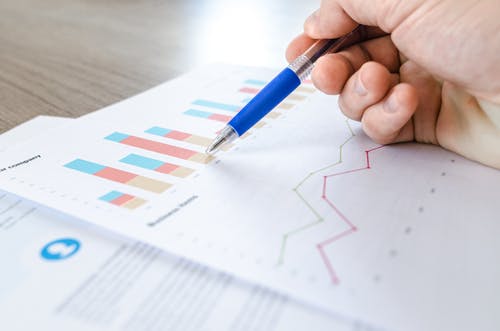Posted: Feb 06, 2019

At home or in a bar or restaurant, people like to drink cocktails. With 28% of US consumers drinking cocktails out of home, the addition of cocktail data to Nielsen CGA's Check Level Insights Pool (CLIP) service provides a clearer picture of cocktail sales in on-premise environments. The new data allows a read on not only cocktails from a Total US level but also gives retailers and suppliers the ability to look at performance by day of the week, day part (time of day), channel and region to help understand cocktail dynamics at a much more granular level.
Across the Total US, the average price of a cocktail is $9.00, just below the $9.48 price consumers state they are willing to pay for a standard cocktail in the latest consumer-focused On Premise User Survey (OPUS). Happy Hour accounts for the slight difference, with afternoon prices dropping to $8.00.
Top 5 Cocktails
Margaritas lead the way as the most sold cocktail across the on-premise, with an average price of $9.49. The sales reflect this cocktail's standing as the most popular cocktail among consumers, 56% of whom stating they would choose it in the on-premise. Martinis are the second most valuable cocktail, with an average selling price of $8.50.
To satisfy consumer demand, retailers should ensure that margaritas, martinis and other top cocktail performers are not only offered but clearly visible on a cocktail menu and at the bar.
DAY PART
As time of day changes, so do consumer preferences. Nearly half (43%) of consumers are most likely to drink cocktails at the start of the night, far eclipsing the 9% most likely to drink at the end of the night. The new cocktail data allows us to break this down further and focus on specific timeframes, so we can see how sales evolve throughout the day.
Unsurprisingly, the morning (6am-12pm) brings high sales of the mimosa and Bloody Mary. The morning is also a key time for such non-alcoholic cocktails and mocktails as Virgin Marys and skinny margaritas, which are showing growth in the on-premise. Regardless of time of day, the 21-34 year old generation is driving this trend, with 16% of them stating they would drink a non-alcoholic cocktail if available.
The margarita hits its stride after breakfast, becoming the best-selling cocktail after midday and hitting a peak during the evening (6pm-12am). During the night (12am-6am), the martini and Long Island Iced Tea both perform strongly as consumers switch to higher ABV drinks.
Regardless of what they're drinking, consumers are more willing to open up their wallets in the evening and night timeframes, with average dollars spent on cocktails at $9.75 and $10.00 respectively, versus $8.50 in the morning and $8.00 in the afternoon.
The varying preferences throughout the day suggest it would be beneficial to have changing cocktail menus for each day part so consumers can easily find the cocktails they are more likely to order. Retailers can then specialize in a few key cocktails for each day part rather than offering an extensive list throughout the day.
The margarita and martini are immune to most regional differences, serving as the top two best-selling cocktails across all markets other than Chicago and Miami. However in Chicago, the margarita is outside of the top five, with the old fashioned and mimosa both performing strongly, while in Miami the mojito is the second most valuable.
New York and Chicago hold the two highest average cocktail prices at $11.00 and $11.95 respectively, whereas Tampa sits squarely in the middle with the average price of all the markets.
Outside of margaritas and martinis, there is significant variation in consumer preference across all markets, demonstrating the importance of customizing what is offered across regions to meet consumer demand. And for retailers that operate in more than one region, a blanket menu will not maximize sales in the way a more individual menu would.
Matt Crompton, Client Solutions Director at Nielsen CGA:
"Analyzing the on-premise landscape through one lens, be that a measurement, analytic or consumer view, is difficult and insufficient. In expanding our CLIP capabilities to include on-premise cocktail data, we are taking cocktail sales measurement to the next level to better reflect the 360-degree landscape.
Having a robust yet tailored cocktail offering can be a key differentiator for chains and independents alike. Cocktails allow the trade to offer a point of theater, and provide suppliers with a key entry point to their brands. The CLIP data will empower our spirits clients to recognize consumer preferences across individual days and time periods where they haven't been able to before, thereby opening the door for retailers and suppliers to meet consumers where they are, when they are."
METHODOLOGY
. Nielsen CGA Check Level Insights Pool (CLIP), Sept.-Dec. 2018
. Nielsen CGA On-Premise Consumer Survey (OPUS), Sept.-Dec. 2018
Source: Nielsen.com February 5, 2019
Go-Wine's mission is to organize food and beverage information and make it universally accessible and beneficial. These are the benefits of sharing your article in Go-Wine.com


The Wine Thief Bistro & Specialty Wines is a locally owned small business in downtown Frankfort, IL offering world class wines in a relaxed, casual gathering spot for friends and family. Offering world class virtual tastings and touchless carryout.
https://www.twtwineclub.com/aboutus
Go-Wine 25 Great Wineries in US selection prioritizes quality, value and availability.
www.go-wine.com/great-wineries-in-america
Tasting wine is a nice experience, but visiting the places in which wine is made is a magic moment. Available in New York City for touchless pickup.